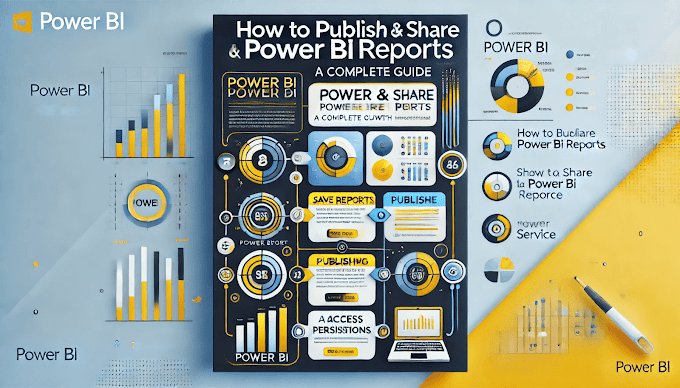Welcome Back to virvijay.com
Power BI Row-Level Security (RLS) is essential for controlling access to data based on user roles. In this guide, you’ll learn:
- ✔ What is Row-Level Security (RLS) in Power BI?
- ✔ How to implement RLS step by step
- ✔ Best practices for setting up Power BI security
- ✔ Real-world examples of RLS use cases
Let’s dive in! 🚀
1️⃣ What is Row-Level Security (RLS) in Power BI?
🔐 Row-Level Security (RLS) restricts data access based on user roles. Instead of showing all the data, Power BI only displays relevant data based on the user's credentials.
🛠 Example Use Case:
- A sales manager should only see sales data for their assigned region.
- A finance analyst should only view financial reports for their department.
- 📌 Without RLS: Everyone sees all data 🛑
- 📌 With RLS: Users only see their relevant data ✅
2️⃣ How to Implement Row-Level Security in Power BI
Let’s set up RLS in Power BI step by step.
🔹 Step 1: Load Your Data
- Open Power BI Desktop
- Import your dataset (Excel, SQL, or another source)
- Ensure you have a column for User Roles or Email IDs
🛠 Example Dataset:
Employee Region Role Email
John North Sales Manager john@company.com
Alice South Sales Manager alice@company.com
Mark West Sales Manager mark@company.com
🔹 Step 2: Create Roles in Power BI
- Go to Modeling > Click Manage Roles
- Click Create New Role
- Select the Table that contains user information
- Enter a DAX Filter Expression
📌 Example DAX Filter:
DAX
[Email] = USERPRINCIPALNAME()
✅ Now, Power BI will only display data for the logged-in user!
🔹 Step 3: Assign Users to Roles
- Save the role
- Click View as Roles to test it
- Publish the report to Power BI Service
- In Power BI Service, go to Security Settings and assign users to roles
🔐 Example:
John sees only North Region Sales
Alice sees only South Region Sales
Mark sees only West Region Sales
🚀 RLS is now active!
3️⃣ Best Practices for Power BI Row-Level Security
- ✔ Use USERPRINCIPALNAME() for dynamic security – This ensures users only see their own data.
- ✔ Avoid hardcoding user emails – Use a lookup table for flexible security management.
- ✔ Test roles before publishing – Always verify RLS using “View as Role” mode.
- ✔ Use RLS in combination with Power BI Service – Manage permissions centrally.
- ✔ Combine RLS with Object-Level Security (OLS) – Restrict not just rows but also specific columns.
4️⃣ Real-World Examples of RLS Implementation
- 📌 Power BI for Sales Teams – Sales managers see only their assigned region’s data.
- 📌 Power BI for HR Analytics – HR staff see only employee data from their department.
- 📌 Power BI for Financial Reporting – Finance users see only their budget and expenses.
🚀 With RLS, organizations ensure data privacy and compliance!
5️⃣ Summary – Implementing Row-Level Security in Power BI
- ✔ Understand RLS – It restricts data access by user roles
- ✔ Create roles in Power BI – Use Manage Roles and DAX filters
- ✔ Assign users to roles – Map roles to users via Power BI Service
- ✔ Follow best practices – Use dynamic security and test your setup
🔔 Coming up next:
- ✔ Power BI Performance Optimization – Speed Up Slow Reports
- ✔ Power BI Embedded Analytics – How to Integrate with Apps
- ✔ Power BI Data Modeling Best Practices
📩 For queries, contact support@virvijay.com
💬 Drop your comments and questions below!

%20%E2%80%93%20Best%20Practices%20&%20Implementation'%20featuring%20key%20concepts%20and%20steps%20for%20setting%20(1).jpg)

.jpg)






.png)


